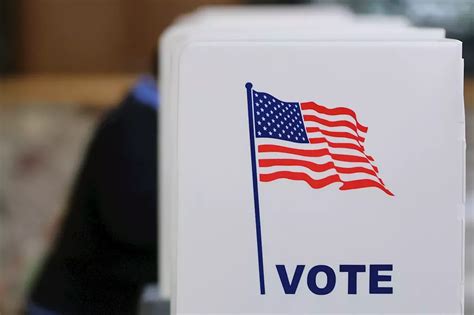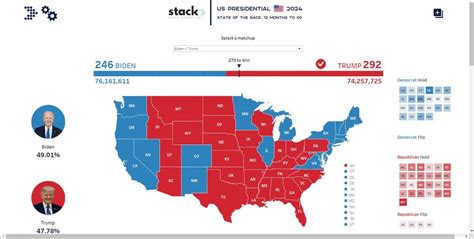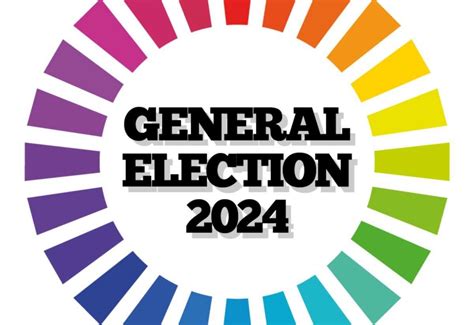Explore the significance of swing states in the 2024 elections, their impact on outcomes, and the importance of voter mobilization and strategic campaigning.As the 2024 election approaches, the significance of swing states cannot be overstated. These pivotal regions, where the electorate remains divided between political parties, often determine the course of presidential elections. In this article, we will explore the crucial role swing states play in shaping electoral outcomes, particularly in the context of the upcoming election. We will delve into strategic campaigning techniques and the importance of voter mobilization in these key areas while analyzing current trends to forecast what might unfold during the election season. By understanding the dynamics of swing states, candidates and voters alike can better prepare for the impact these battlegrounds will have on the future of our nation. Join us as we uncover the strategies and implications of swing states in the 2024 election landscape.
Understanding The Importance Of Swing States In Elections
The importance of swing states in elections cannot be overstated. These states have a unique political landscape that makes them pivotal in determining the outcome of presidential elections. Unlike solidly Democratic or Republican states, swing states can be won by either major party in an election, largely depending on the prevailing political climate, candidate appeal, and voter turnout. This unpredictability is what makes them the focal point for campaign strategies.
In the context of the 2024 election, understanding these states and their electoral significance is crucial. Below are some key factors highlighting why swing states hold such importance:
- Electoral Votes: Swing states often hold a significant number of electoral votes, which can be decisive in a close election.
- Voter Demographics: They typically feature a mix of urban, suburban, and rural populations, influencing the messaging and strategies of both parties.
- Tightly Contested Races: Close polls make swing states a battleground where each vote counts, drawing heavy campaigning efforts.
- Shifts in Political Alliances: Changing demographics and issues can swing these states from one party to another, making them indicators of wider national trends.
To better understand the dynamics of swing states, the following table shows some of the key swing states for the upcoming 2024 election, along with their electoral votes:
| Swing State | Electoral Votes |
|---|---|
| Pennsylvania | 20 |
| Wisconsin | 10 |
| Michigan | 15 |
| Florida | 29 |
| Arizona | 11 |
The importance of swing states lies in their ability to influence the direction of the nation through their electoral choices. As candidates gear up for 2024, focusing on the unique characteristics and voter concerns in these key states will be essential for securing victory.
How Swing States Affect Electoral Outcomes In 2024
In the context of the 2024 election, swing states are projected to play a critical role in determining the overall outcome. These states, often characterized by their unpredictable voting patterns, hold a unique position in the electoral landscape. Their importance stems from the fact that they can be won by either major political party, making them vital targets for campaign strategies.
The importance of swing states lies in several key factors:
1. Electoral Votes: Swing states typically have a significant number of electoral votes. For instance, states like Florida, Pennsylvania, and Wisconsin are not only populous but also have a history of deciding the presidency due to their electoral weight.
2. Voter Demographics: The demographic composition of swing states is often diverse, reflecting a mix of urban and rural voters. This diversity influences voter behavior, making campaign messaging more complex but essential for success.
3. Campaign Focus: Campaigns often allocate resources heavily towards swing states, ensuring that candidates can deliver tailored messages that resonate with the local electorate. This focus often results in increased media coverage and political advertisements in these regions.
4. Shifting Alliances: Voter sentiment in swing states can change rapidly due to various factors, including economic conditions, social issues, and national events. Candidates must remain agile in their approaches, adapting to shifting alliances that can make or break a campaign.
5. Impact on National Conversations: The results in swing states often reflect broader national trends, influencing the dialogue surrounding key issues. Candidates often promote policies that align with the mood of swing state voters, thereby shaping the overall narrative of the election season.
Overall, swing states are pivotal in framing the electoral battle, underlining the significance of a strategic approach and a keen understanding of voter sentiment. As we move closer to the 2024 election, the spotlight will undoubtedly remain on these vital states, highlighting their profound impact on the final electoral outcome.
Strategic Campaigning: The Role Of Swing States
In the context of the 2024 election, swing states will be pivotal in determining the outcome. The importance of these states cannot be overstated, as they often hold the balance of power between political parties. Candidates from both major parties will allocate significant resources to these regions, recognizing that every vote counts in tight races.
Campaign strategies in swing states typically involve tailored messaging that resonates with local issues and voter concerns. Understanding the demographics and key issues within these areas—such as economic development, healthcare, and education—allows candidates to connect effectively with constituents. For instance, a candidate might focus on labor issues in a state with a strong manufacturing base, while emphasizing social issues in a more metropolitan area.
Moreover, swing states experience heightened campaign activities, including rallies, advertisements, and direct voter engagement. Both parties may deploy surrogates, utilize data analytics to target efforts, and initiate grassroots mobilization campaigns to increase voter turnout. This is where the importance of building a strong volunteer network becomes clear, as local engagement can significantly influence voter turnout.
The role of swing states in strategic campaigning is not just about winning electoral votes; it’s about setting the narrative. Candidates who perform well in these states can claim momentum and credibility as they head into the rest of the election season. Thus, understanding and leveraging the importance of swing states not only impacts immediate electoral outcomes but also shapes the overall political landscape.
The Importance Of Voter Mobilization In Key States
In the context of the 2024 election, The Importance of voter mobilization in swing states cannot be overstated. Mobilizing voters effectively can swing electoral outcomes in favor of a candidate, illustrating why campaigns focus heavily on engaging and mobilizing potential voters in these critical areas.
Campaigns that prioritize voter mobilization in key states often employ a variety of strategies, including grassroots outreach, targeted advertising, and community engagement initiatives. These strategies aim to inform voters about the issues at stake, encourage them to participate in the electoral process, and ultimately drive turnout on Election Day.
Moreover, understanding the demographics and motivations of voters in swing states is essential. Campaigns often tailor their messages to resonate with the unique needs and concerns of local constituents, further enhancing their chances of success. For instance, issues like healthcare, jobs, and education often play significant roles in motivating voters, and campaigns that address these topics directly can see a noticeable impact on voter turnout.
Another important aspect of voter mobilization is the use of technology. Social media platforms, mobile apps, and online registration tools have revolutionized how campaigns engage with voters, making it easier than ever to reach out and encourage participation. These tools can help identify potential supporters, register new voters, and mobilize individuals through reminders and informational resources.
The success of any political campaign in a swing state hinges on its ability to mobilize voters. With the potential to flip electoral votes, these states serve as battlegrounds where each vote carries significant weight. As the 2024 election approaches, the importance of voter mobilization efforts in these areas will be a key factor in determining the outcome. To remain competitive, candidates must invest time and resources into connecting with voters and driving enthusiastic participation.
Analyzing Swing State Trends For The 2024 Election
As we approach the 2024 election, understanding the dynamics of swing states is crucial for both political analysts and candidates. Historically, these battlegrounds have played a pivotal role in determining the outcome of presidential elections. In 2024, several factors will influence the trends in swing states, which are essential for grasping the importance of voter sentiment and shifting demographics.
One of the notable trends is the growing diversity in swing states. States like Arizona, Georgia, and Michigan have seen significant demographic changes, with an influx of younger voters and more diverse populations. This shift can influence the priorities of campaigns, as candidates will need to address the concerns and interests of these emerging voter blocs.
Additionally, the impact of economic issues cannot be overlooked. Factors such as inflation rates, job growth, and local economic conditions will shape voter opinions. Swing states with struggling economies may lean towards candidates who promise economic stability and growth, highlighting the importance of targeted economic messaging in these areas.
Furthermore, the rise of social media and digital campaigning has transformed how candidates engage with voters in swing states. Platforms like Facebook, Twitter, and Instagram allow for more personalized interactions and real-time feedback, making voters feel more connected to the campaign. Understanding how to leverage these platforms effectively can be a game changer for candidates aiming to win over undecided voters in these critical areas.
Historical voting patterns are another essential consideration. Candidates will need to analyze past election results in swing states to develop strategies that can sway voters. Attention must be paid to the sentiments expressed in recent elections, as they offer insights into the evolving political landscape and the importance of adapting strategies accordingly.
Analyzing swing state trends for the 2024 election requires a multifaceted approach, involving demographic shifts, economic conditions, digital engagement, and historical context. Candidates who strategically approach these factors will have a stronger chance of securing vital electoral votes in the key states that often decide presidential races.
Frequently Asked Questions
What are swing states?
Swing states, also known as battleground states, are regions where both major political parties have similar levels of support among voters, making them crucial in determining the outcome of an election.
Why are swing states significant in the 2024 election?
Swing states are significant because they can tilt the electoral balance; winning these states is often key to securing enough electoral votes to win the presidency.
Which states are considered swing states in 2024?
In 2024, key swing states may include Pennsylvania, Wisconsin, Michigan, Arizona, Georgia, and North Carolina, among others, due to their fluctuating voter demographics and historical voting patterns.
How do swing states influence campaign strategies?
Candidates often focus their campaign efforts, advertising, and ground game on swing states to maximize their chances of gaining votes where they are most needed.
What factors contribute to a state becoming a swing state?
Factors that contribute include demographic changes, economic issues, political landscape shifts, and recent voting history that show variations in party support.
How can voter turnout in swing states affect the election outcome?
Higher voter turnout in swing states can significantly impact the election results as even small shifts in the number of votes can sway the electoral outcome.
What role do polls play in understanding swing states during the election?
Polls provide insights into voter preferences and trends in swing states, helping campaigns adjust their strategies to target specific concerns and demographics.






